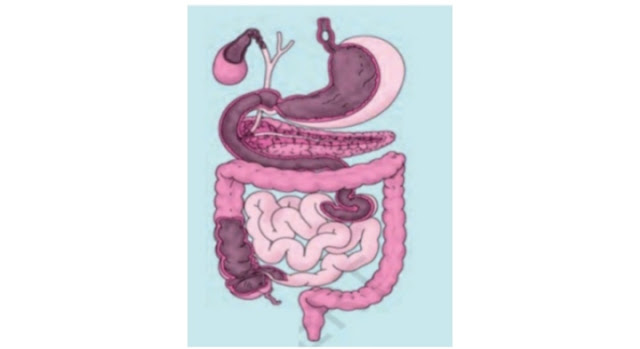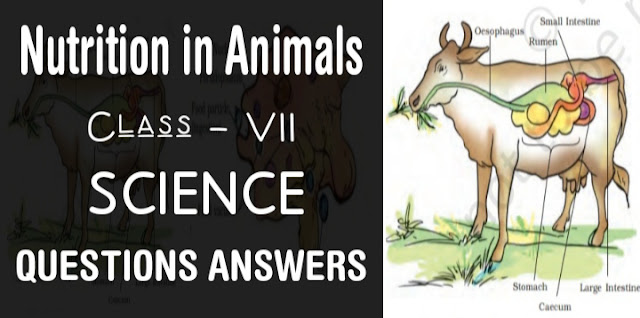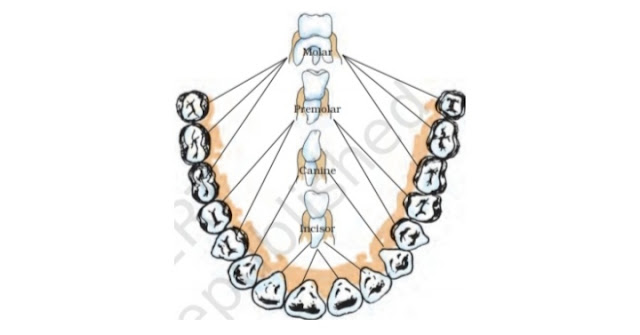Nutrition in Animals class 7 Science NCERT Solutions
Nutrition in Animals class 7 Science NCERT Solutions: Nutrition in Animals is the chapter 2 from class 7 Science NCERT. Here you'll get Nutrition in Animals class 7 Science/Nutrition in Animals class 7 Science NCERT Solutions.
Nutrition in Animals class 7 Science Main points
Animal nutrition includes nutrient requirement, mode of intake of food and its utilisation in the body.
The human digestive system consists of the alimentary canal and secretory glands. It consists of the (i) buccal cavity, (ii) oesophagus, (iii) stomach, (iv) small intestine, (v) large intestine ending in rectum and (vi) anus.
The main digestive glands which secrete digestive juice sare (i) the salivary glands, (ii) the liver and (iii) the pancreas.
The stomach wall and the wall of the small intestine also secrete digestive juices.The modes of feeding vary in different organisms.
Nutrition is a complex process involving: (i) ingestion, (ii) digestion, (iii) absorption, (iv) assimilation and (v) egestion.
Digestion of carbohydrates, like starch, begins in the buccal cavity. The digestion of protein starts in the stomach. The bile secreted from the liver, the pancreatic juice from the pancreas and the digestive juice from the intestinal wall complete the digestion of all components of food in the small intestine. The digested food is absorbed in the blood vessels from the small intestine.
The absorbed substances are transported to different parts of the body. Water and some salts are absorbed from the undigested food in the large intestine.
The undigested and unabsorbed residues are expelled out of the body as faeces through the anus.The grazing animals like cows, buffaloes and deer are known as ruminants. They quickly ingest, swallow their leafy food and store it in the rumen. Later, the food returns to the mouth and the animal chews it peacefully.
Amoeba ingests its food with the help of its false feet or pseudopodia. The food is digested in the food vacuole.
Nutrition in Animals class 7 Science Notes
All animals require food for obtaining energy, growth, repair of damaged parts and functioning of the body. The process of taking food by an animal and its utilisation in the body is called animal nutrition.
Plants can prepare their own food by the process of photosynthesis but animals get their food from plants, either directly by eating plants or indirectly by eating other animals that eat plants. Some animals eat both plants and other animals.
All the animals can be divided into three groups on the basis of their food habits. These are,
- Herbivores: Those animals which eat only plants are called herbivores. Examples are Goat, Cow, and Deer etc.
- Carnivores: Those animals which eat only other animals as food are called carnivores. Examples are Lion, Tiger, and Lizard etc.
- Omnivores: Those animals which eat both, plants and animals are called omnivores. Examples are Man, Dog and Crow etc.
Animal nutrition includes nutrient requirements mode of intake of food and its utilisation in the body.
The components of food such as carbohydrates are complex substances which cannot be utilised by the body. So, they are broken down into simpler substances. The process of breakdown of complex components of food into simpler substances is called digestion.
Process of nutrition in animals
Holozoic nutrition: It is a process by which animals take in their food. It involves different steps namely, ingestion, digestion, absorption, assimilation and egestion. Human beings exhibit holozoic mode of nutrition involving five basic steps.
Ingestion: The process of taking food into the body is called ingestion.
Digestion: the process in which the food containing large, insoluble molecules is broken down into small, water soluble molecules is called digestion.
Absorption: The process in which the digested food passes through the intestinal wall into blood stream is called absorption.
Assimilation: The process in which the absorbed food is taken in by the body cells and used for energy, growth and repair is called assimilation.
Egestion: The process in which the undigested food is removed from the body is called egestion.
Human Digestive system
We take food through our mouth, digest and utilise it. Human digestive system consists of alimentary canal and its associated human digestive system glands.
Various organs of human digestive system in sequence are
- Mouth (Buccal Cavity)
- Oesophagus (food Pipe)
- Stomach
- Small intestine
- Large intestine
- Rectum
- Anus
The glands which are associated with human digestive system are
Salivary glands- Located in mouth or Buccal Cavity
Liver- It is the largest gland situated in the upper part of abdomen on the right side.
Pancreas- located just below the stomach
The ducts of various glands open into the alimentary canal and pour secretion of their juices into the alimentary canal.
Digestion in the mouth
We take food through our mouth and the process of taking food into the body is called ingestion. The mouth or buccal cavity contains teeth, tongue and salivary glands.
Digestion begins in the mouth when we chew the food with the help of our teeth. The teeth cut the food into smaller pieces, chew and grind it.
Chewing breaks down the food into smaller pieces and mixes them with saliva. This process is called mastication.
The salivary glands secrete watery liquid called saliva. Saliva is a digestive juice that helps to partially digest the starch present in the food.
The tongue helps in mixing saliva with the food. Tongue is a muscular organ that helps you eat the food. It mixes saliva with the food during chewing and helps in swallowing it.
We also taste food with our tongue as it has taste buds that detect different tastes of food.
Teeth are used for cutting, grinding and tearing the food before you swallow it. The four types of teeth in our mouth are,
i. Incisors: They help us in biting and cutting the food.
ii. Canines: They help us in piercing and tearing the pieces of meat.
iii. Premolars: They assist the molars by holding the food with their cusps and also crushing them.
iv. Molars: They help us in chewing and grinding the food so that it can be swallowed easily.
Class 7 Science Chapter 2 Nutrition in Animals Questions Answers
Exercises
1. Fill in the blanks:
(a) The main steps of nutrition in humans are __________, __________,__________, _________ and __________.
(b) The largest gland in the human body is __________.
(c) The stomach releases hydrochloric acid and ___________ juices which act on food.
(d) The inner wall of the small intestine has many finger-like outgrowths called _________.
(e) Amoeba digests its food in the ____________ .
Ans:
(a) The main steps of nutrition in humans are ingestion, digestion, absorption, assimilation and egestion.
(b) The largest gland in the human body is Liver.
(c) The stomach releases hydrochloric acid and digestive juices which act on food.
(d) The inner wall of the small intestine has many finger-like outgrowths called villi.
(e) Amoeba digests its food in the food vacuole.
2. Mark ‘T’ if the statement is true and ‘F’ if it is false:
(a) Digestion of starch starts in the stomach. (T/F)
(b) The tongue helps in mixing food with saliva. (T/F)
(c) The gall bladder temporarily stores bile. (T/F)
(d) The ruminants bring back swallowed grass into their mouth and chew it for some time. (T/F)
Ans: (a) False (b) True (c) True (d) True
3. Tick (√) mark the correct answer in each of the following:
(a) Fat is completely digested in the
(i) stomach (ii) mouth (iii) small intestine (iv) large intestine
Ans: small intestine
(b) Water from the undigested food is absorbed mainly in the
(i) stomach (ii) food pipe (iii) small intestine (iv) large intestine
Ans: large intestine
4. Match the items of Column I with those given in Column II:
Column I Column II
Food components Product(s) of digestion
Carbohydrates Fatty acids and glycerol
Proteins Sugar
Fats Amino acids
Ans: Column- I Column- II
Food components Product(s) of digestion
Carbohydrates Sugar
Proteins Amino acids
Fats Fatty acids and glycerol
5. What are villi ? What is their location and function ?
Ans: Villi are the finger-like projections or outgrowth. They are present in the small intestine of our digestive system. The villi increase the surface area for absorption of the digested food.
NCERT Solutions of Nutrition in Animals class 7 Science
6. Where is the bile produced ? Which component of the food does it help to digest ?
Ans: Bile juice is produced in the liver, and it helps in the digestion of fats by breaking large fat globule into smaller ones.
7. Name the type of carbohydrate that can be digested by ruminants but not by humans. Give the reason also.
Ans: Cellulose is the carbohydrate that can be digested by ruminants but not by humans because humans lack cellulase enzyme required to digest the cellulose.
8. Why do we get instant energy from glucose ?
Ans: Glucose is a simple sugar which is easily absorbed by the blood whereas other carbohydrates are first broken down into glucose and then absorbed; hence, glucose gives instant energy.
9. Which part of the digestive canal is involved in:
(i) absorption of food ________________.
(ii) chewing of food ________________.
(iii) killing of bacteria ________________.
(iv) complete digestion of food ________________.
(v) formation of faeces ________________.
Ans:
(i) Small intestine
(ii) Buccal cavity
(iii)Stomach
(iv) Small intestine
(v) Large Intestine
NCERT Solutions for Nutrition in Animals class 7 Science
10. Write one similarity and one difference between the nutrition in amoeba and human beings.
Ans: Similarity: Both amoeba and human beings follow the holozoic type of nutrition.
Difference: Humans intake food through buccal cavity. In amoeba food is ingested through pseudopodia.
11. Match the items of Column I with suitable items in Column II
Column I Column II
(a) Salivary gland (i) Bile juice secretion
(b) Stomach (ii) Storage of undigested food
(c) Liver (iii) Saliva secretion
(d) Rectum (iv) Acid release
(e) Small intestine (v) Digestion is completed
(f ) Large intestine (vi) Absorption of water
(vii) Release of faeces
Ans: Column-I Column-II
(a) Salivary gland (iii) Saliva secretion
(b) Stomach (iv) Acid release
(c) Liver (i) Bile juice secretion
(d) Rectum (ii) Storage of undigested food
(e) Small intestine (v) Digestion is completed
(f) Large intestine (vi) Absorption of water
12. Label Fig. 2.11 of the digestive system.
 |
| Fig. 2.11 A part of human digestive system |
Ans:
13. Can we survive only on raw, leafy vegetables/grass ? Discuss.
Ans: No, we cannot survive only on raw, leafy vegetables because they mainly consist of Cellulose which cannot be digested by us due to lack of cellulose digesting enzyme in our body.












No comments:
Post a Comment
Kindly donnot paste any SPAM link. Thank you very much for reading, Happy learning.